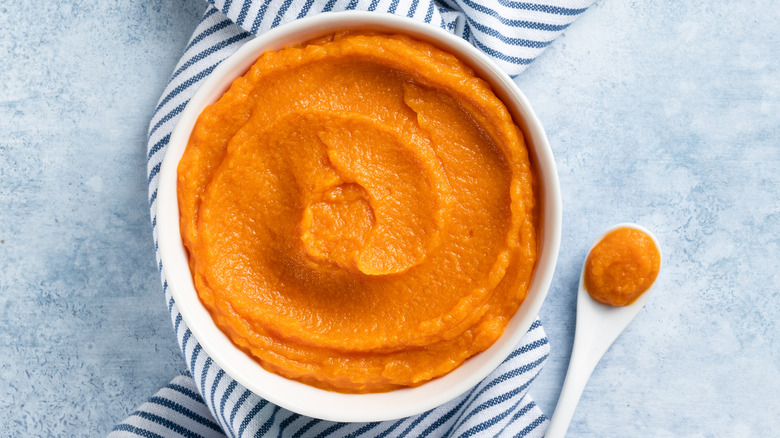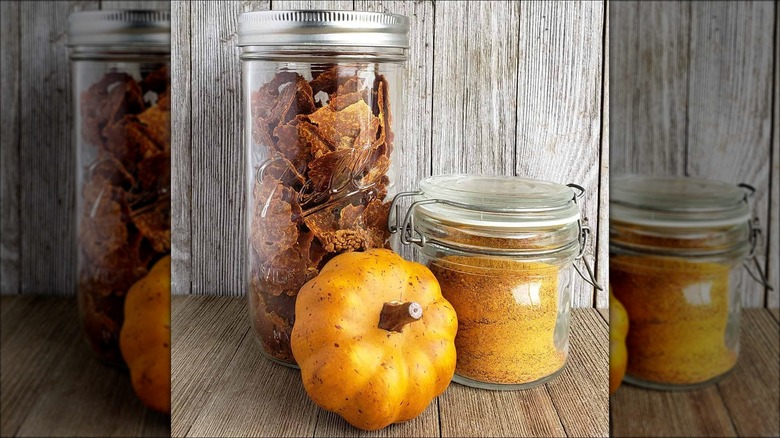Why You Should Dry Canned Pumpkin Before Baking With It
There are plenty of creative ways to use canned pumpkin, but you should always keep in mind just how much moisture pumpkin pulp contains. Pumpkins are generally 90% water, whether canned or fresh, so recipes can easily become waterlogged if you don't make adjustments. After all, who wants to eat a soupy pumpkin pie? To achieve a firm, custardy pie, you may have to dry your canned pumpkin.
Fortunately, you can easily remove some moisture (or at the very least, make the moisture more consistent throughout the pumpkin puree) in one of several ways. The easiest is to spread your puree out on a cookie sheet and blot it with a paper towel. If you have a little more time on your hands, you can put your pumpkin puree either on the stove or in the oven to cook off a bit of moisture. Don't cook it for more than five minutes, though, as you don't want your puree to stiffen or burn. This particular means of upgrading your canned pumpkin also gives the puree a more velvety texture.
Completely dehydrate canned pumpkin for year-round use
Removing more moisture from pumpkin puree only opens up new possibilities. Blotting or cooking your puree will eliminate excess water so you can use it in cakes or pies without flooding your recipe, but you can also take things a step further and completely dehydrate your canned pumpkin.
To do this, simply spread your pumpkin puree out on a fruit leather sheet and pop it into a food dehydrator until the pumpkin has dried all the way through. You can then use a blender, food processor, or coffee grinder to break the dried pumpkin down into a fine powder. If you plan to store this powder for future use, make sure you bake it again to remove any remaining dampness. The resulting "pumpkin flour" is a great way to add pumpkin flavor and nutritional benefits to any recipe without also introducing a bunch of unnecessary moisture.

